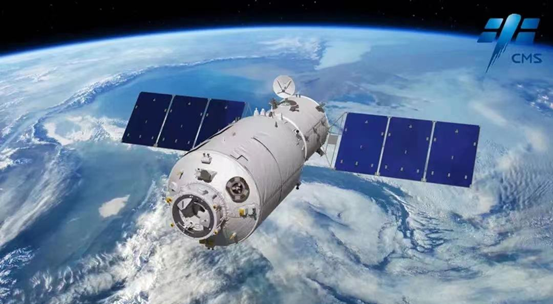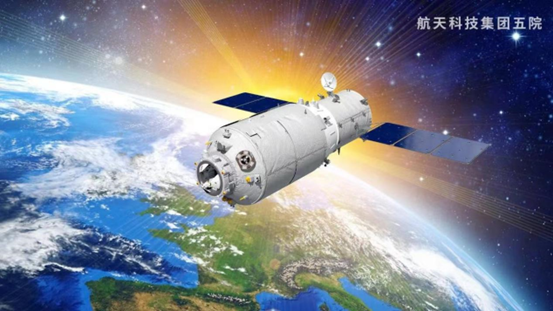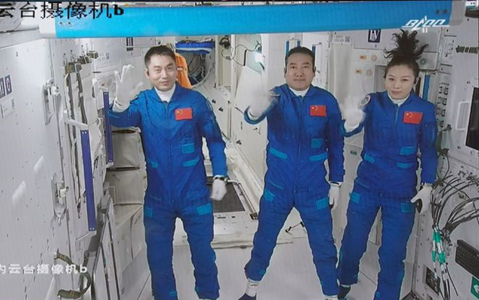By Yu Jianbin, Zhang Yafeng, People’s Daily
China’s Tianzhou-2 cargo spacecraft was deorbited and re-entered the Earth’s atmosphere underground control according to plan on March 31, Beijing time, after completing all of its scheduled tasks involving key technology verification and extended application tests in orbit for the construction of China’s space station.
Most of the spacecraft burned up during the re-entry process, while a small amount of the debris fell into the intended area of safe water in the South Pacific.
The re-entry of Tianzhou-2 into the Earth’s atmosphere means that Chinese astronauts sent into space onboard the country’s Shenzhou-13 spaceship will also return to the Earth soon.
The Tianzhou-2 is the first cargo spacecraft sent into orbit in the key technology verification phase of the China Space Station, carrying 6.8 tonnes of supplies to the space station.

The regular duration for Chinese astronauts to work and live in China’s space station during its operations is six months, which means that crew rotation and cargo replenishment are carried out every six months. Before crew members leave the space station, the cargo spacecraft normally leaves first to take away most of the waste produced during their space life.
After Tianzhou-2 cargo spacecraft’s recent separation from the space station, China’s Shenzhou-13 crew members are preparing for their return to the Earth in mid-April.
Deorbiting and destroying cargo spacecraft that has accomplished its tasks represents another vivid practice of peaceful utilization of space resources, and demonstrates China’s sense of responsibility as a major player in space, according to Li Zhihui, deputy commander-in-chief of the Tianzhou-2 cargo spaceship with the China Academy of Space Technology (CAST).
Generally speaking, it is extremely dangerous for an in-orbit spacecraft to hit space junk larger than 10 centimeters. Space junk often makes spacecraft have to change obit to avoid collisions and ensure its own safety, and sometimes severely affects spacecraft’s orbital flight missions.
The treatment of space debris faces huge difficulties. It takes years or even decades for space debris in low-Earth orbit at an altitude of 400 kilometers to gradually drift out of the orbit and disappear.

For China, deorbiting its spacecraft that has completed tasks is an inevitable choice.
At the end of their life, low-Earth orbit satellites or other spacecraft descend to lower altitudes with the aerodynamic forces intensifying under the action of atmospheric drag or control system; at this point, the spacecraft can be considered to have re-entered the Earth’s atmosphere, said a designer of Tianzhou-2 with the CAST.
During the re-entry, low-Earth orbit spacecraft travels at a speed of eight kilometers per second. Under the action of aerodynamic heating and forces, the spacecraft gradually disintegrates, and then again, finally burns up, the designer added.
To reduce the risk to ground personnel, the common practice for deorbiting large near-Earth spacecraft is to carry out a controlled re-entry. In this way, it is able to fall out of orbit and into a safe area, which are generally the uninhabited areas in the South Pacific.

China already accomplished the controlled reentry missions of its Tianzhou-1 cargo spacecraft and Tiangong-2 space laboratory in 2017 and 2019, respectively.
The deorbiting of Tianzhou-2 cargo spacecraft according to international practices this time can not only reduce the amount of space debris to avoid hazards to in-orbit spacecraft and the ground and create a safe and clean space environment for other spacecraft, but play an important role in global space environment governance and avoid occupying orbital resources.
In the next five years, China will advance the construction of a space environment governance system comprehensively. The country will strengthen space traffic control, build and improve its space debris monitoring facility system, cataloging database and early warning service system, and coordinate the work related to in-orbit maintenance of spacecraft, collision avoidance control, and space debris mitigation to ensure the safe, stable and orderly operation of the space system.


